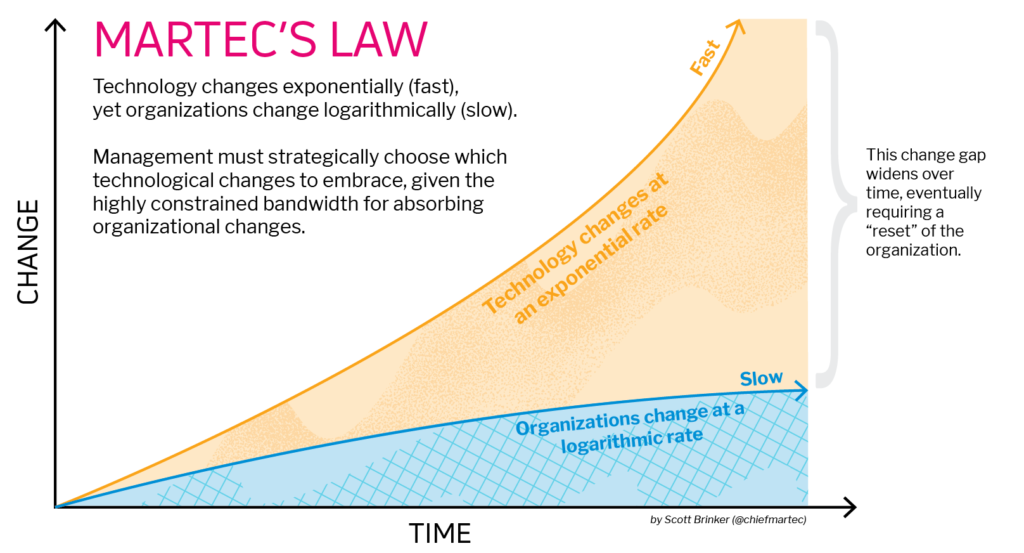ADAPTABILITY
AND AGILITY:
ABSOLUTES FOR EVERY ORGANIZATION
Three Tips for Creating Flexible Mindsets
Darwin once said, “It is not the strongest of the species that survive, nor the most intelligent, but the ones most responsive to change.”
These words ring truer than ever today, as our customers, competitors, and markets are shifting at increasingly faster paces.
To not only survive but thrive in the current competitive marketplace, an organization’s internal rate of adaptability needs to move at the same pace, or faster, than external forces. If we apply Darwin’s observation to today’s business world, we can assume that the organizations that land on top are the ones that are the most agile. Organizations must be open to approaching their internal and operational processes differently, routinely seeking out ways to improve upon the status quo – or else the market will simply outrun them.


Leaders and organizations need to challenge themselves and their people to continue to look for new methods and innovations. Some of you may need to do this through necessity – there’s a new competitor snapping at your heels or rapidly changing market conditions, like inflation or supply issues, quickly impacting your bottom line. But in many ways, this is just good business sense. Looking back at history, there are companies that were on top for a very long time, but they got comfortable with the status quo and many of them are gone now. You know who they are or were.

Left Image Example
“The biggest regret most people have when looking back on their lives and careers tends not to be the things they tried and failed at, but the things they never tried. The majority of entrepreneurs don’t have these regrets, as the possibility of creating surpasses the fear of failure – but most large businesses don’t act that way.”
Getting Comfortable With Adapting
If you believe an agile and adaptive culture and entrepreneurial energy are critical to capturing – and sustaining – a position as a leader in your marketplace, are you pushing to create a more effective and efficient company? Or, are you playing it safe, sitting by the sidelines with a great idea, waiting for someone else to go first?
Most of us say we are open to a new strategic initiative, but really we’re afraid of it. Why? It can be costly, time consuming, or go against typical company protocol. Worse, you likely don’t understand how the new strategy will impact your role, team, or department.
The most successful companies have employees who consciously call out the disconnects, who don’t hide behind fear, and who lead with new approaches so their organization can keep up with – or outpace – external marketplace disruptions.
No one loves failure, but companies that are adaptive accept it as part of the process. There is such a thing as a “good failure” that should be acknowledged, learned from, maybe even celebrated because there are usually perfectly acceptable reasons it didn’t work out.


Setting Your Organization Up For Success
Here are three key elements that drive adaptability and agility:
1 | LEADERS SET THE TONE.
When employees decide whether an organizational goal or initiative is serious or not, they look at company executives and at their manager’s behavior first. Are the leaders providing lip service along the lines of “This too shall pass” and “Do as I say and not as I do” or are they authentically standing behind the goal?
Leaders must be particularly conscious at the beginning of a process that their every action and activity is being watched and directly impacts the appetite of the organization to take more or less risk and to volunteer ideas or not. It’s critical for leaders to have honest conversations about this with one another if they want to create a more agile and adaptive culture, and understand that they must lead by example if they truly want to activate new strategies.

2 | FOSTER AND ENABLE THE NETWORK.
We live in an age where leaders can’t and won’t have all the answers, and that is okay. The best answers are often hidden in plain sight in different parts of the organization. Great companies not only have the culture that encourages these ideas to surface, but they make it very easy to surface them and connect them to the people who can use that
Hampton has a highly effective website where general managers frequently post questions, suggest ideas, and comment on and rate the content on the site. Designed in conjunction with the end-user audience, it is now sustained in a decentralized way by them. It is also an invaluable listening post for leaders in the organization to learn about what is and is not resonating with management and guests at the hotel. So, think about what type of user-centered platform might work for you and your culture that allows for sharing of ideas and listening to the collective wisdom of the talent within your organization.

3 | EVALUATE YOUR DEGREES OF FREEDOM.
Agility and adaptability require you to distribute responsibility more broadly. Most large organizations understandably create protocols to manage risks. This could be anything from the rules in place for expense reports and reimbursements to the latitude provided to respond to a customer problem.
Look at some of these items and ask yourself how much trust you have given your employees to act as representatives of your company. Likely, it inversely correlates to the creativity, innovativeness, and agility of your organization. There are obviously limits, but challenge how much you can let go of to empower your people to make decisions closer to where the action is happening rather than moving up and down internal bureaucracies.
These three elements are key to weaving agility and adaptability throughout your organization. But, there’s no time to waste. If your organization is going to be nimble enough to weather any storm, maintain leadership position, or overtake the market leader, it needs to create a culture that welcomes new ideas and is comprised of people ready to embrace the unknown.







